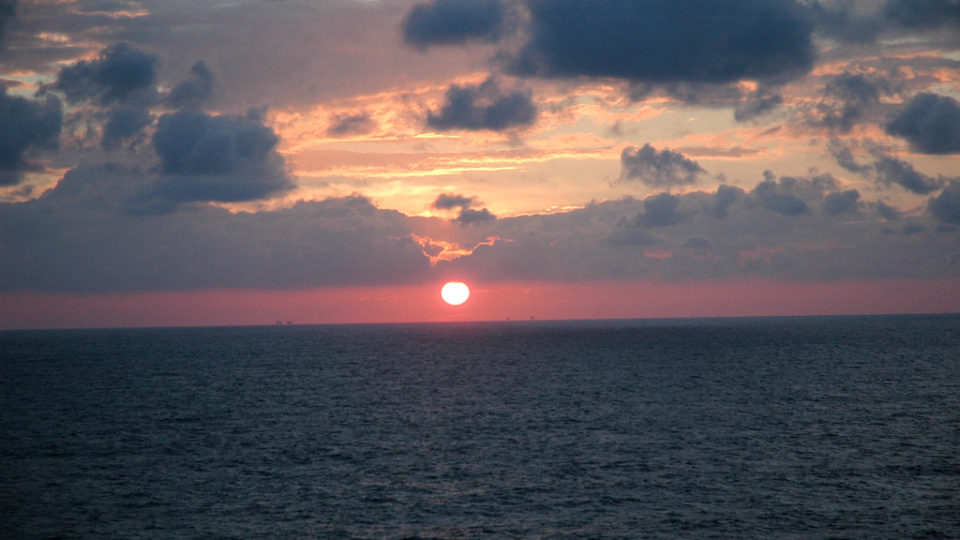The Gulf of Mexico dead zone occurs every summer, and is considered one of the largest dead zones in the world. This cyclical event occurs where the Mississippi River empties into the Gulf of Mexico, just off the coast of Louisiana and Texas.
This annual dead zone is primarily caused by excess nutrient pollution from human activities, such as urbanization and agriculture, occurring throughout the Mississippi River watershed. Washed off the land by spring rains, these excess nutrients stimulate an overgrowth of algae once they reach the Gulf of Mexico. The algae in the Gulf eventually die, and then sink and decompose in the water. The resulting area of the ocean ends up with a condition known as hypoxia, which is an insufficient amount of oxygen to support most marine life. In hypoxic or dead zones, animals that can’t swim away will often suffocate and die.
Scientists from the National Oceanic and Atmospheric Administration estimate that this year the dead zone in the Gulf of Mexico will be approximately 8,000 square miles, which is roughly the size of Massachusetts. The research team uses U.S. Geological Survey river flow and nutrient data to make its forecast.
According to NOAA, the abnormally high amount of spring rainfall is a major factor contributing to this year’s dead zone. Last month, nitrate loads entering the Mississippi River watershed were 18% above the long-term average, and phosphorus loads were about 49% above the long-term average.
While the 2019 forecast is slightly less than the record size of more than 8,700 square miles set in 2017, it’s still much larger than the five year average size of 5,700.
**********
Web Links
Very large dead zone forecast for the Gulf of Mexico
Massive 8,000-mile ‘dead zone’ could be one of the gulf’s largest
Photo, posted May 22, 2009, courtesy of Michael McCarthy via Flickr.
Earth Wise is a production of WAMC Northeast Public Radio.
